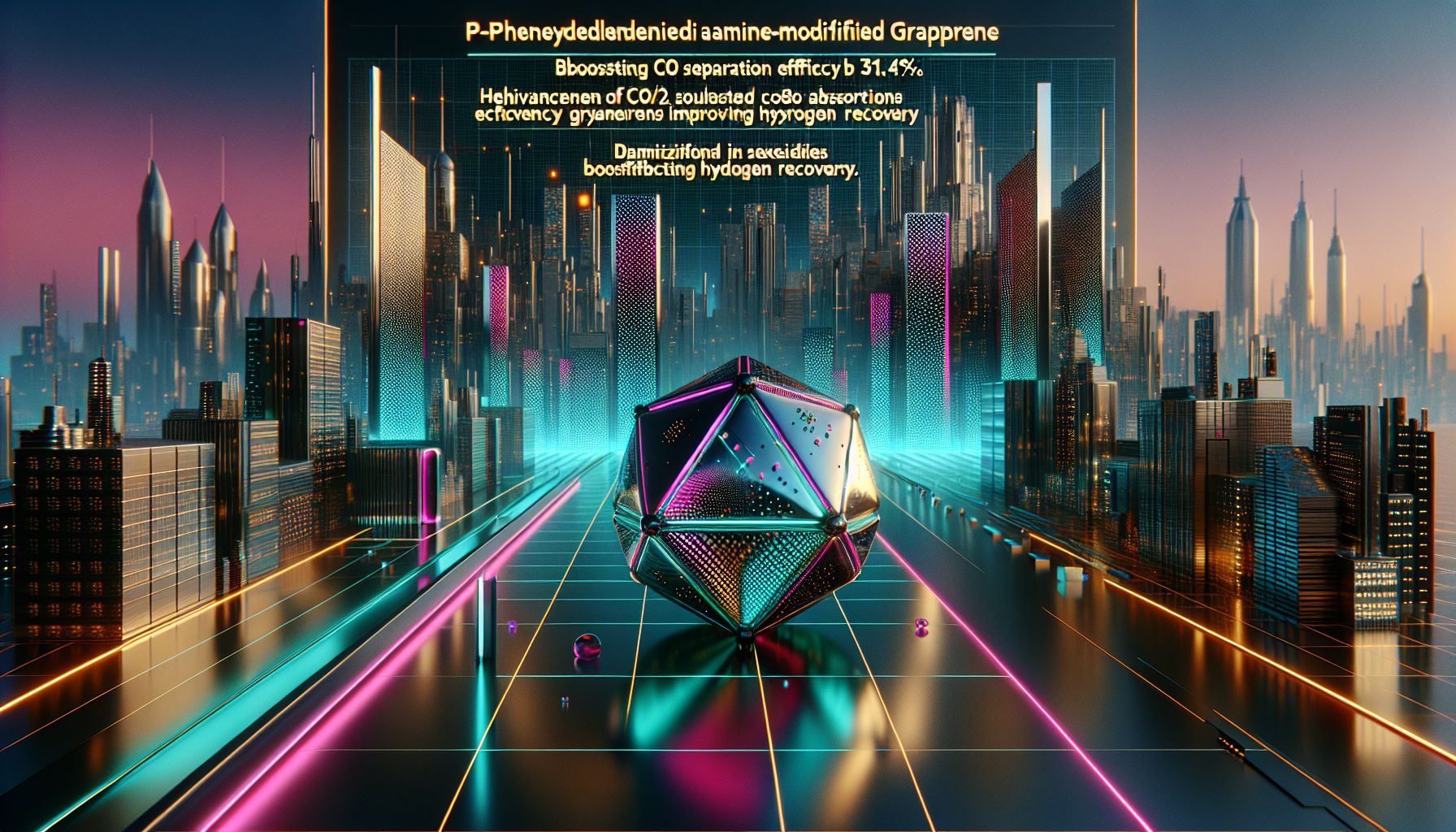Graphene's Game-Changing Role in Hydrogen Extraction

N/A, Monday, 19 May 2025.
New graphene adsorbents significantly enhance CO2/H2 separation efficiency. p-Phenylenediamine-modified graphene boosts CO2 adsorption by 31.4%, improving hydrogen recovery. This advancement could revolutionise green hydrogen production!
Revolutionising Hydrogen Separation with Graphene
Hey readers, have you ever imagined that graphene could play a vital role in separating gases more efficiently? Well, that’s exactly what’s happening with the new advancements in graphene adsorbents! A recent study highlights that when graphene is modified with p-phenylenediamine, it increases its CO2 adsorption capacity by a whopping 31.4% and improves the CO2/H2 separation selectivity by 34.8% compared to its original form. These tweaks in graphene’s structure are not just academic pursuits—they’re likely game-changers for hydrogen production processes. Imagine the leap in efficiency this could mean for green hydrogen technology! [1]
A Peek into the Mechanism
Let me take you deeper into how this magic works. The modified graphene uses amine groups to enhance CO2 adsorption by adjusting its electrostatic potential, essentially making it a CO2 magnet! Moreover, this happens under conditions as mild as 273 K and 2 bar. This isn’t just about boosting numbers; it has real-world applications for sustainable energy. The tech could reduce the energy loads in hydrogen separation processes significantly, making it economically viable on a larger scale [1]. I mean, who wouldn’t want more hydrogen with less hassle?
Implications for the Future
Now, here’s where it gets interesting—fast forward to the next big impact! These advancements in CO2/H2 separation provide a springboard for the next generation of hydrogen extraction methods. Such breakthroughs can redefine the energy sector by enhancing the cost-effectiveness of hydrogen production. It’s like giving the industry’s old methods a bit of a shake-up! With continued research and innovations like these graphene adsorbents, we’re looking at a cleaner and potentially greener energy future. Exciting, right? [1][2]